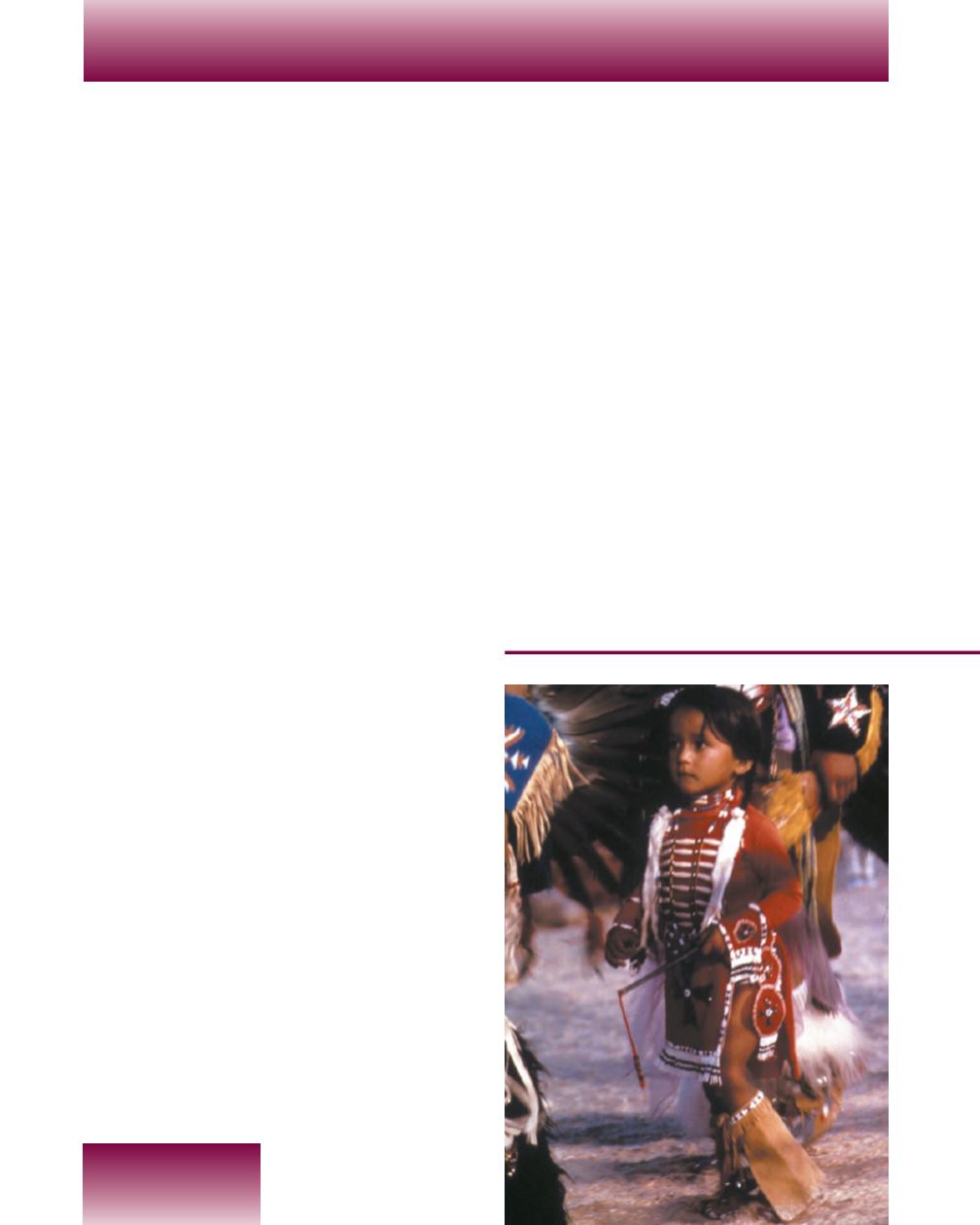
64
●
Chapter 4
tribe, she was considered to be worth twice
asmuch as aman!
Women spent much time preparing two
meals a day. Along withmeat and fish, the
three popular garden foods were corn,
beans, and squash. Squash was really what
we call pumpkin. Corn was the most
important crop of the tribes. The Iroquois
and Algonquins had 12 different ways to
prepare corn. Theyused sap from themaple
tree to add sugar to their diet.
Childrenwere taught to respect their elders.
Boys and girls learned what their parents
knew. Boys were taught to hunt, fish, and
make weapons. Girls stayed with their
mothers to learn all the jobs a woman did.
This prepared the children for adulthood.
Childrenwere part of the wife’s clan, but the
husbandwas not part of the clan.
Their Homes
N
either theAlgonquinnor the Iroquois
tribes were wandering
nomads
.
Nomads are people who move their
homes from place to place looking for food
andwater. The Algonquin and Iroquois tribes
set upvillages for their people.However, if the
soil became poor, they moved the clan to
another area close by. The Algonquin tribes
built theirhomesdifferently than the Iroquois
tribes. The Algonquins built small homes
called
wigwams
for each family. They used
young trees from the forest to build three
shapes of wigwams — a rounded dome, a
cone, or a rectangular shape. Then, they
placed strips of bark over the frames. Holes
were left in the roof’s center for the smoke to
rise from fires. The opening to the wigwam
was coveredwith deer or bear skins.
Algonquins also built
sweat lodges
at
each end of the village. One was for men
and one was for women. Sweat lodges were
buildingswhereheated rockswereplaced in
water. The steam that was given off was
meant to cure illnesses or clean the body.
After being in the steam for a while, the
Algonquinswouldoften jump intoanearby
stream or roll in the snow!
The Iroquois used the same forest
materials to build their homes. However,
they built
longhouses
from 50 to 100 feet
long. Their houses were eight feet wide. A
longhouse could have as many as 12
families living inside. Several holeswereput
in the roof for the fires thatwerebuilt along
the center. Families lived in small “rooms”
about eight feet wide. The “walls” that
separated the roomswere coveredwithdeer
skin. In a longhouse, all the relatives of the
family lived together.
ANative American girl in traditional clothing.


